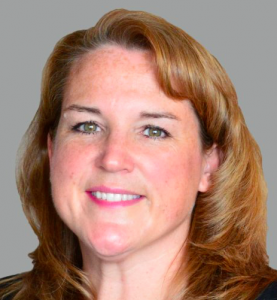
Performance Conversations: Ensuring Employees Reach their Highest Potential
Many organizations struggle with performance management. Differentiating staff is the first step for leaders to be able to properly have performance conversations with those they serve. Conducting effective performance conversations is a complex and critical skills for leaders. Likewise, it is one of the most important jobs for leaders to do. These are not simply performance conversations, but value conversations–conversations that influence how much value each employee will contribute to achieving the organization’s mission and purpose. Without these vital conversations, an organization will move backwards.
In the West Allis-West Milwaukee School District (WAWM) in Milwaukee, WI, value-driven leaders are implementing effective performance conversations. As a result, the organization has seen increases in achievement of goals, retention of high-performers, and better application of professional development opportunities. Key to the district’s success has been their diligent work holding individual school leaders accountable in cascading the process down to their faculty and staff; thus, ensuring employees reach their highest potential.
 Deidre Roemer, WAWM’s Director of Leadership and Learning, shares her insights regarding how the leadership team’s work around performance conversations has contributed to the district’s success:
Deidre Roemer, WAWM’s Director of Leadership and Learning, shares her insights regarding how the leadership team’s work around performance conversations has contributed to the district’s success:
How has the leadership team supported and seen growth in your principals’ performance conversations?
Studer Education helped us create and implement a Strategic Plan for the entire district. This plan has allowed us to stay focused on specific goals related to school improvement. In our work with school leaders, the plan has served as the basis for “why” we do what we do. It also defines what our goals are and how we will accomplish them.
We believe it is essential to have highly qualified staff working with our students. We provide extensive professional development in support of the academic and social goals of our strategic plan. Our team conversations have helped principals identify their high performers so they have conversations that recognize and in effect “re-recruit them” in service to our students and schools. Principals have also learned how to determine if a teacher needs a coaching plan. This has helped us better align resources for staff that are struggling.
When we held our fall teacher kick-off meeting, our superintendent, Dr. Marty Lexmond, explained that while no one gets fired if we fail to meet our 5-year goals, our failure does impact our students and in effect, limits their opportunities to attain personal excellence. He made it clear that we need 100% of the people, 100% of the time, for 100% of the students. This helped set a common purpose for school leaders as they work with staff. When we meet with principals, we routinely revisit that message. In turn, they use it as a framework when having performance conversations and team-building. We model our conversations in the way we want leaders in meetings and classroom visits to interact with staff. We stay focused and strategic in our work together. Now, leaders are truly understanding and implementing performance conversations that celebrate what is going well and encourage a growth mindset in what needs to improve.
How has WAWM made performance conversations their own? What worked in between coaching sessions?
Our performance conversations are part of our calibration around school practices and teacher evaluation. We connect the ideas that we do in coaching back to the strategic plan and to the work we do around equity and student well-being. We also use performance conversations to connect leaders who are struggling with resources and support. Moving forward, we are starting to do some coaching calibration with our instructional coaches to ensure their work aligns directly to improved performance.
We applaud the WAWM leadership team and their diligent work to master effective performance conversations. As a result of navigating crucial conversations around valuable data, leaders can better provide their employees with the tools they need to be reflective, grow professionally, and add value to the organization’s mission and purpose.


